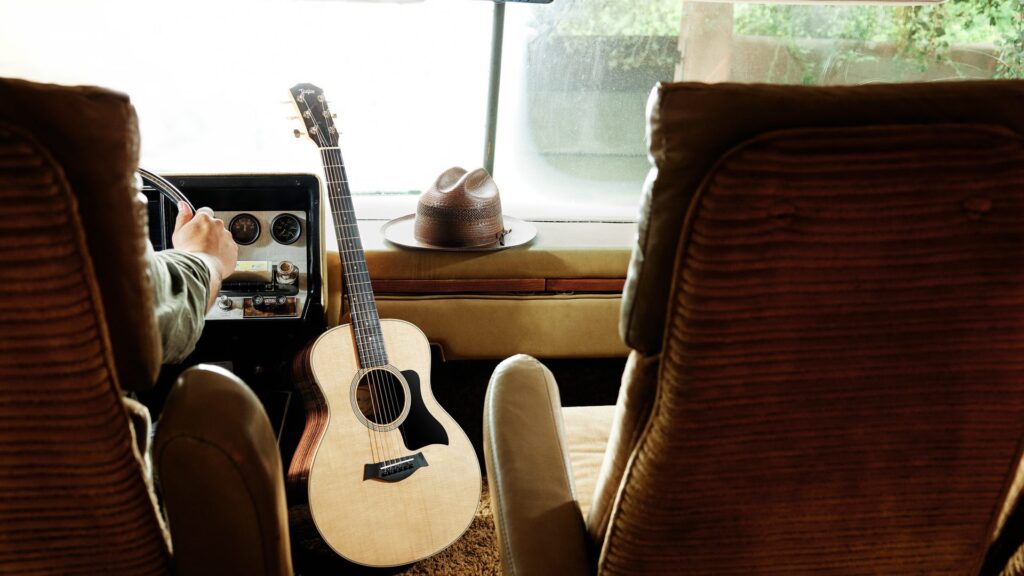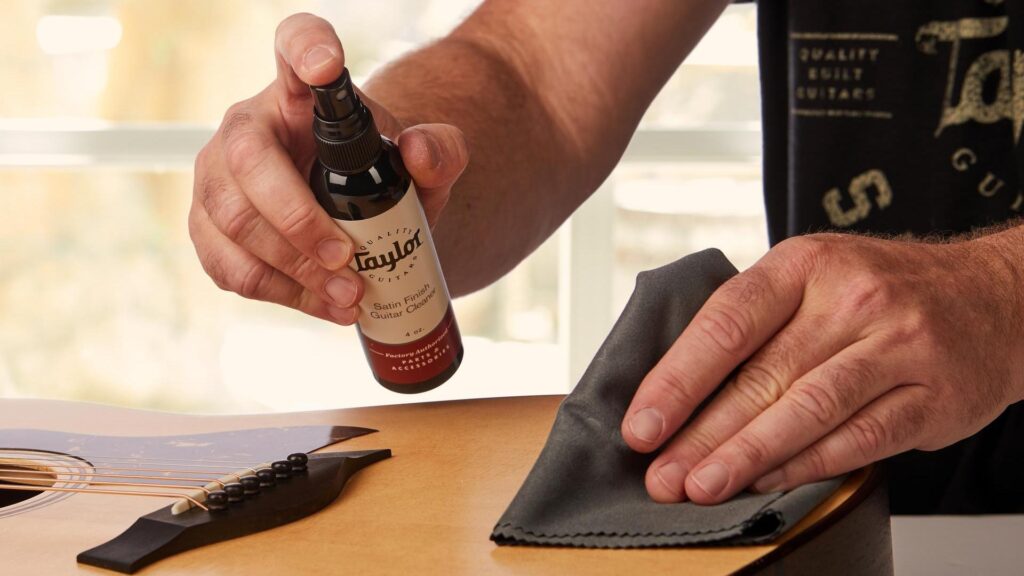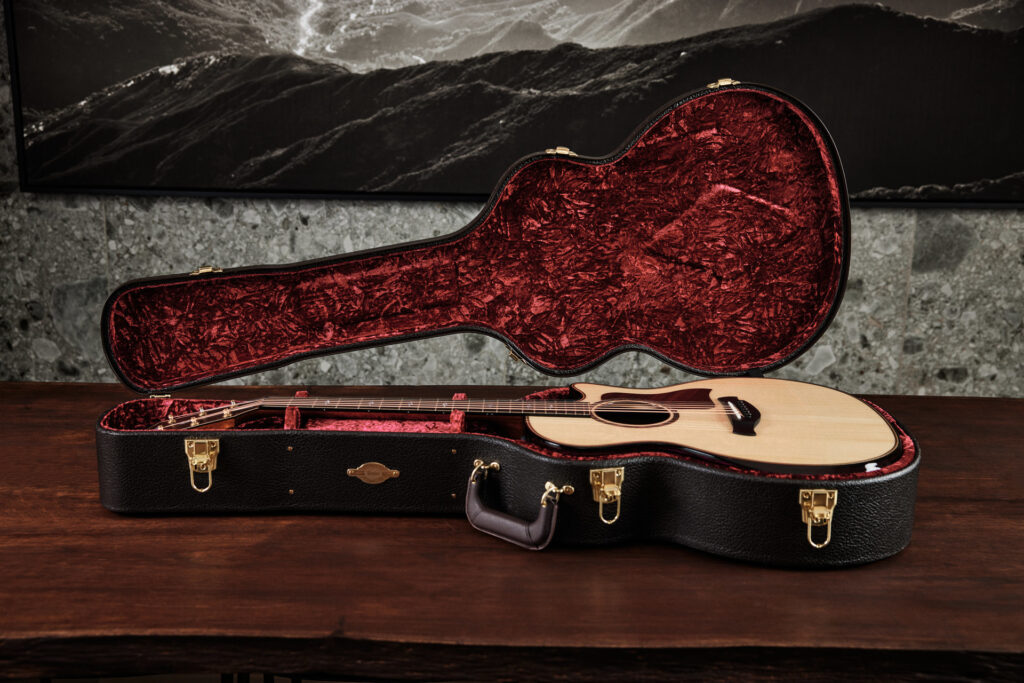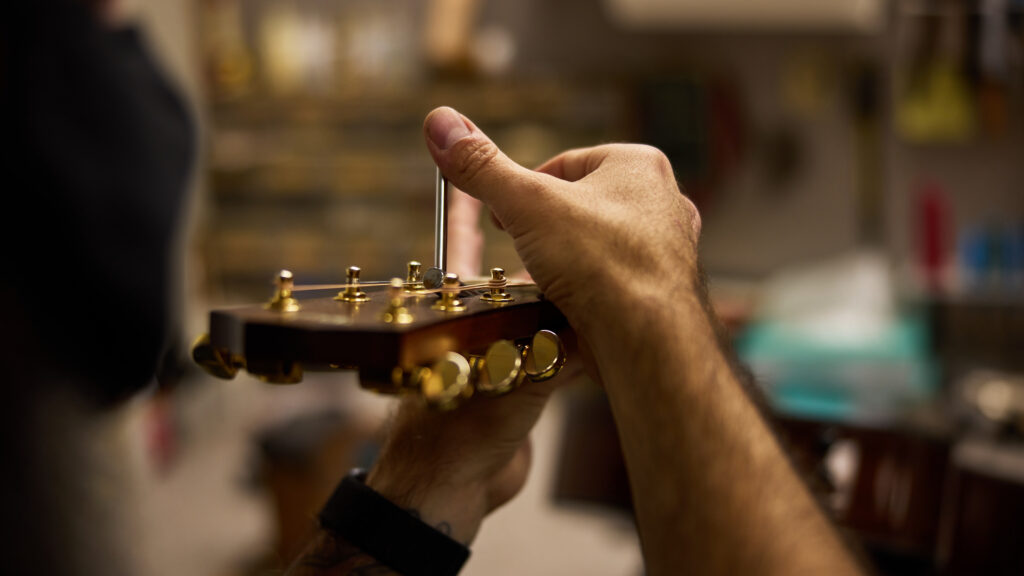With summer in full swing (at least here in the northern hemisphere), people are packing up suitcases, hitting the road and taking to the skies, and if you’re like us, you might be thinking about traveling with your acoustic guitar. But these days, travel is hardly a simple affair; between security lines, packed airplanes and the never-ending logistics of roadtripping, there are plenty of variables that can affect your ability to make music on the road.
Taylor is here to help. We know how important your guitars are, and we understand how scary it can be to take your beloved instruments out of their safe, comfortable homes and take them on the road where you’ll have to trust airlines and drivers with getting them from A to B in one piece. Keep reading for a rundown of the key factors to keep in mind as you find the best way to travel with a guitar.
1. Practice good guitar care.
Keeping your guitar safe while traveling starts with keeping it in great condition at home. With a 6 string acoustic guitar, the number-one care issue is usually humidity—maintaining proper relative humidity levels around your guitar will go a long way in making sure it doesn’t get damaged on the road. Always make sure to keep your acoustic guitar in the 45%-55% relative humidity range, and if you’re traveling between different climates, you might want to invest in a digital hygrometer and a case humidifier to keep the woods nice and pliant (but make sure your humidifier doesn’t violate FAA restrictions on liquids—keep reading for more info).
Other important guitar care practices include conditioning your fretboard and keeping your guitar sweat-free—more on that later.
2. Know your airline’s policies around traveling with a guitar.
In the U.S., the federal Transportation Security Administration (TSA) permits you to bring your guitar as a carry-on or checked luggage. Click to learn more about how the TSA treats musical instruments.
You should also know the policy of the airline you’ll be flying. The policy should cover both carry-on and checked options, and it’s usually posted on the airline’s website. For carry-ons, the guitar must fit in the overhead bin or other approved storage locations in the cabin, based on available space at the time of boarding. (Smaller travel guitars like the GS Mini and Baby Taylor fit without a problem.) It often helps to be among the early boarding groups (more overhead space), and don’t underestimate the power of a smile and a courteous exchange with airline personnel — they’ll be more inclined to accommodate your needs.
3. If you plan to bring your guitar as a carry-on, check your guitar’s pockets.
A truss rod wrench or string cutter in your case/gig bag compartment probably won’t clear a security check, so if you’ll be checking a bag, it’s a good idea to pack those items. Also, if you plan to travel with Humidipak® humidity control packets, you’re probably better off packing them with a checked bag just to be safe. The TSA’s policy for carrying-on liquids and gels currently limits the volume to 3.4 ounces per container. Although each fresh Humidipak contains about 2 ounces of moisture, the volume isn’t listed on the packet (it can vary depending on humidity levels), so there’s no guarantee that they’ll be accepted. Once you arrive at your destination, don’t forget to take steps to monitor and maintain a healthy humidity level for your guitar.
4. No need to de-tune before flying.
Whether your guitar is in the plane’s cabin or the cargo hold, the air is pressurized, which means there is no additional stress on the guitar. The idea that you should slacken the strings before flying (or extended periods of non-use) is a leftover notion from a bygone era, when guitars were built without adjustable truss rods, which made it more difficult to counteract the tension of the strings on the neck. Modern guitars have adjustable truss rods, which are factory-calibrated to balance the natural forward-pulling tension of the strings. Any damage that occurs to guitars during air travel usually happens as a result of baggage handlers, not air pressure. And a detuned guitar won’t provide any greater protection from impact in that scenario (we’ve done our own extensive drop tests). In general it’s not good to have your guitar strings heavily slackened for extended periods of time. The neck will start to back bow without the counter-tension of the strings.
Related: Guitar Care Tips for Summer
5. On road trips, treat your guitar like a pet.
If it’s a summer day, don’t leave your guitar sitting in a hot car for an extended period of time. If you wouldn’t leave your pet in the car for the same length of time, don’t do it to your guitar. If you don’t have an alternative place to store your guitar, at least try to find a shady parking spot to keep the temperature cooler.
6. Don’t forget to wipe.
The warmer it is, the more likely you are to sweat while you play, and that extra perspiration on your strings can reduce their tonal liveliness. During the summer you’re also more likely to play outside, exposing the guitar to dust, campfire smoke, and other assorted grime. Wiping down the strings after you play with a soft, dry cloth will help preserve the string life and tone. Be sure to also wipe the back of the neck and the lower bout (bass side) where your strumming arm rests to absorb any perspiration.
Happy travels, Taylor players!





























